Search Images
Browse Content (p. 1374)
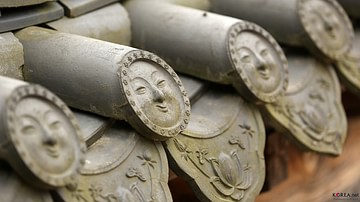
Image
Traditional Korean Roof Tiles
Ceramic traditional roof tiles from Korea. Not only did tiles have a functional and decorative role but they were also indicators of the inhabitants higher social status. (Hwangjeon-ri, Masan-myeon, Gurye-gun, Jeollanam-do)
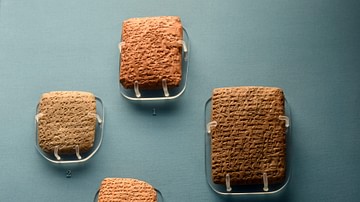
Image
The Amarna Letters
These clay tablets (letters) were found in the ruins of Akhenaten's capital, Tell el-Amarna, Egypt. They were inscribed with Babylonian cuneiform inscriptions, not hieroglyphs. The letters represent the diplomatic correspondence sent by various...
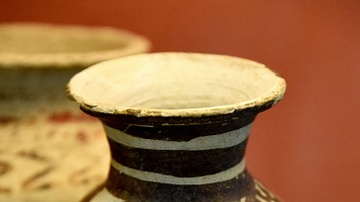
Image
Pottery Jar from Ninevite V Period
This pottery jar was handmade and painted. It is carinated and stemmed with four equidistant vertically perforated lugs on the carination. Ninevite 5 Period, 3000-2750 BCE. From Nineveh, Northern Mesopotamia, Iraq. (The British Museum, London...
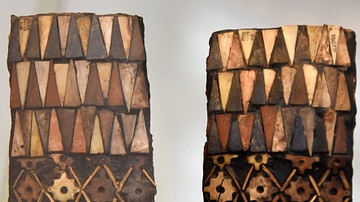
Image
Inlaid Plaques from Ur
These 2 plaques were inlaid with shell, lapiz lazuli, mother-of-pearl, and limestone red stone. Excavated by Sir Henry Layard for the Department of Antiquities in Iraq. These plaques were part of the objects allotted to the British Museum...
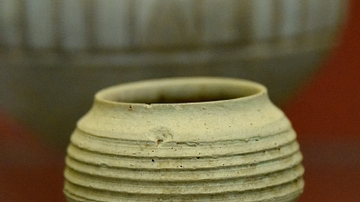
Image
Pottery Cup from Ninevite V Incised Period
This pottery cup was wheel-made and unpainted. It has a pointed base. Excavated by Robin Hamilton and Reginald Thompson in 1930-1931 season. Ninevite 5 period, 2750-2500 BCE. From Nineveh, northern Mesopotamia, modern-day Iraq. (The British...
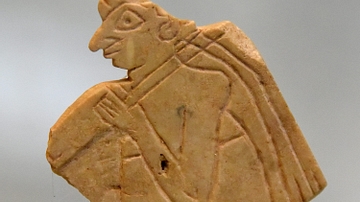
Image
Sumerian Man Holding a Pole
This fragment of a stone inlay was found in Kish. It depicts an incised design of a man wearing the typical Sumerian long robe, carrying a pole on his shoulder. This is probably from a battle scene. The overall depiction of this man is very...
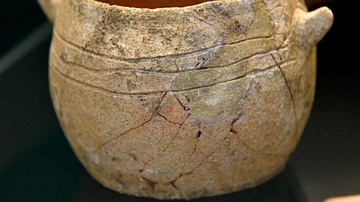
Image
Bowl from Tiwal esh-Sharqi
This bowl was found in Tiwal esh-Sharqi, Jordan Valley. EBIV, 2400-2000 BCE. (The British Museum, London).
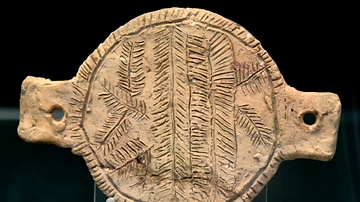
Image
Censer Lid from Lachish
Pottery censer lid. Early alphabetic inscription on reverse. The Late Bronze Age at Lachish. (The British Museum, London).
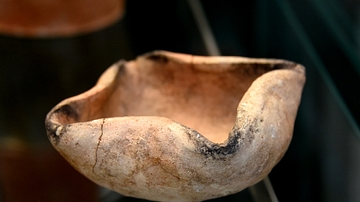
Image
Lamp from Tiwal esh-Sharqi
The usual lamp from this period has four spouts. From analyses, it has been possible to identify the fuel used as fish oil. EBIV, 2400-2000 BCE. From Tiwal esh-Sharqi, Jordan Valley. (The British Museum, London).
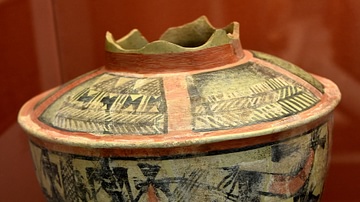
Image
Painted Ceramic Jar From Khafajah
This is an example of a type of decorated pottery known as Scarlet Ware. The painting includes chariot and banquet scene with musicians. One musician plays a bull-headed lyre. The jar is the earliest object so far known to combine these recurrent...